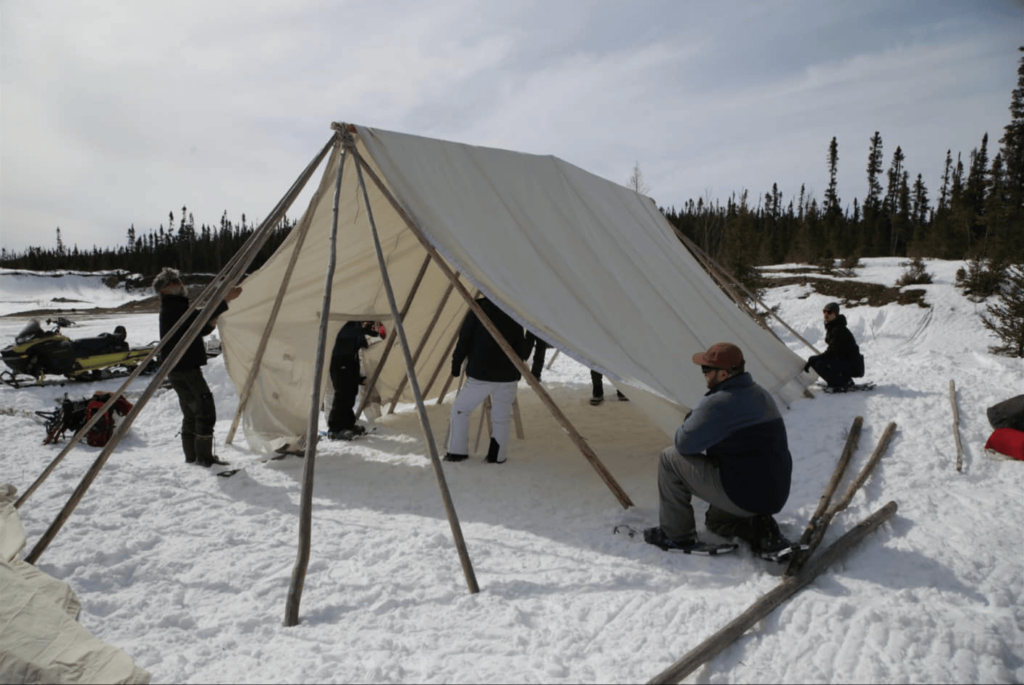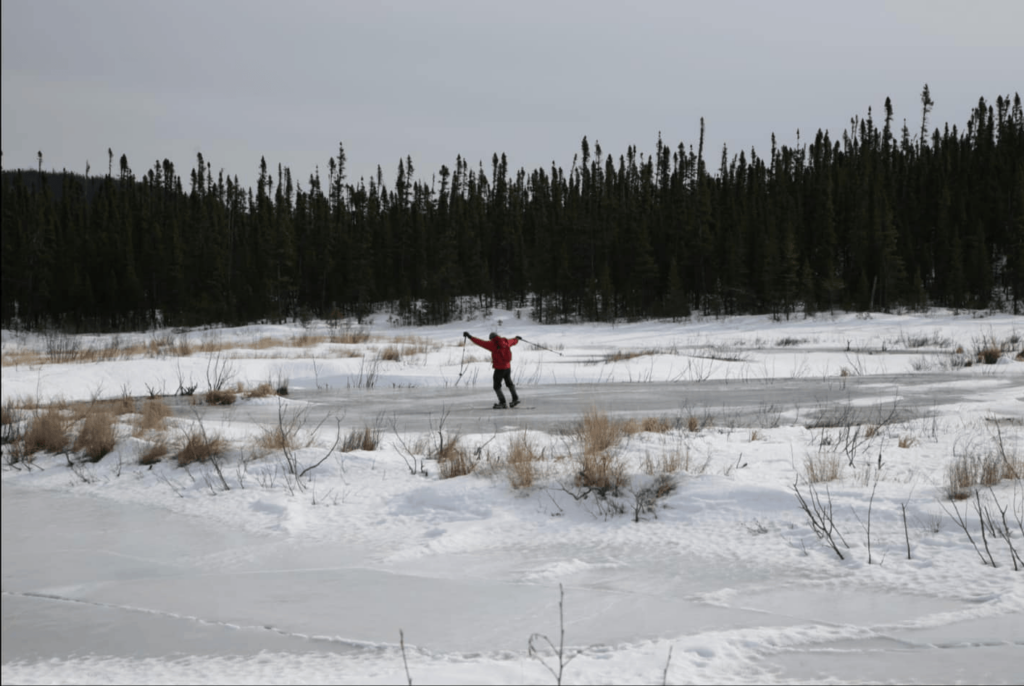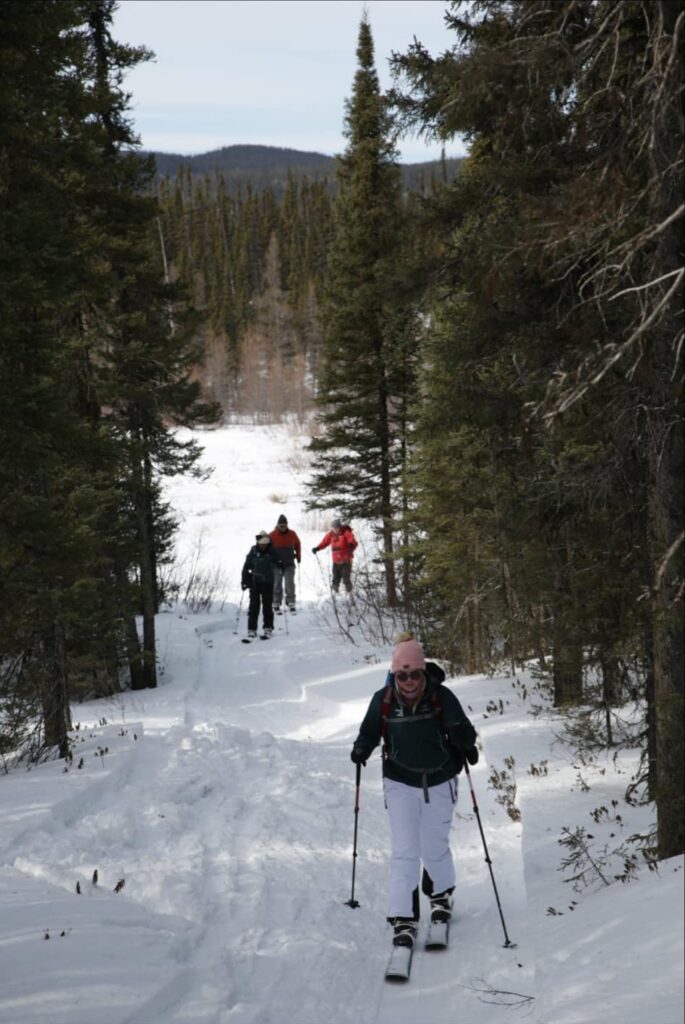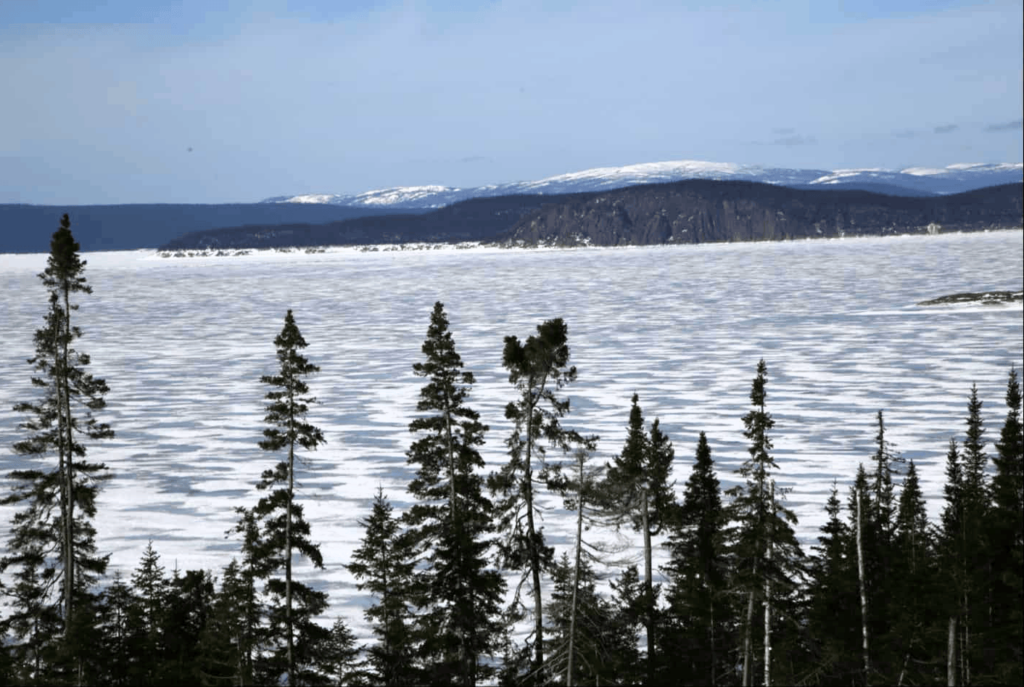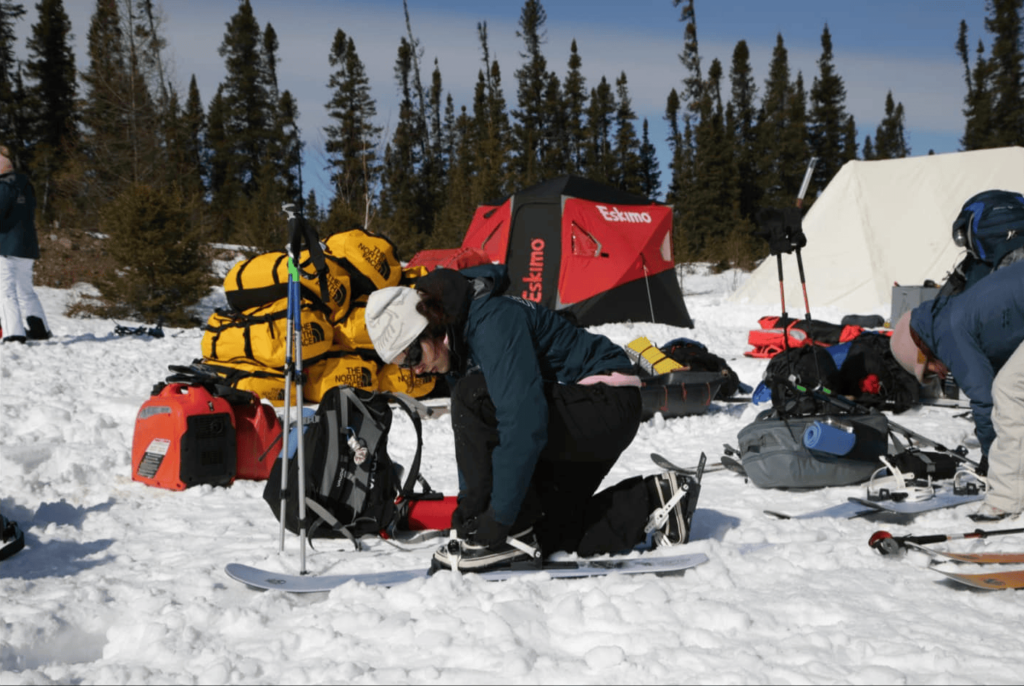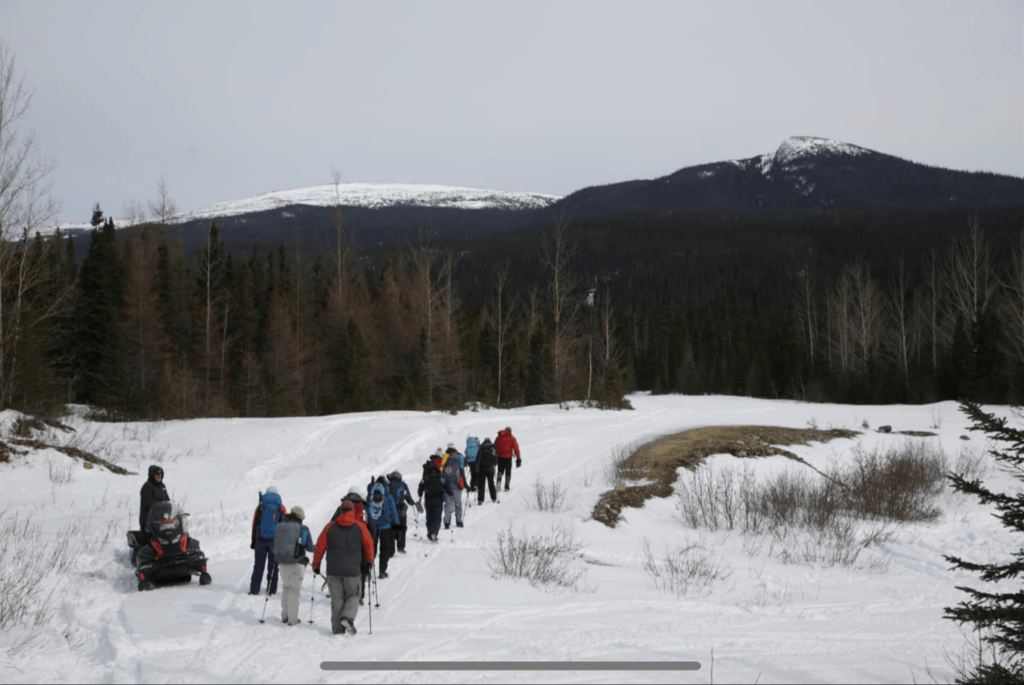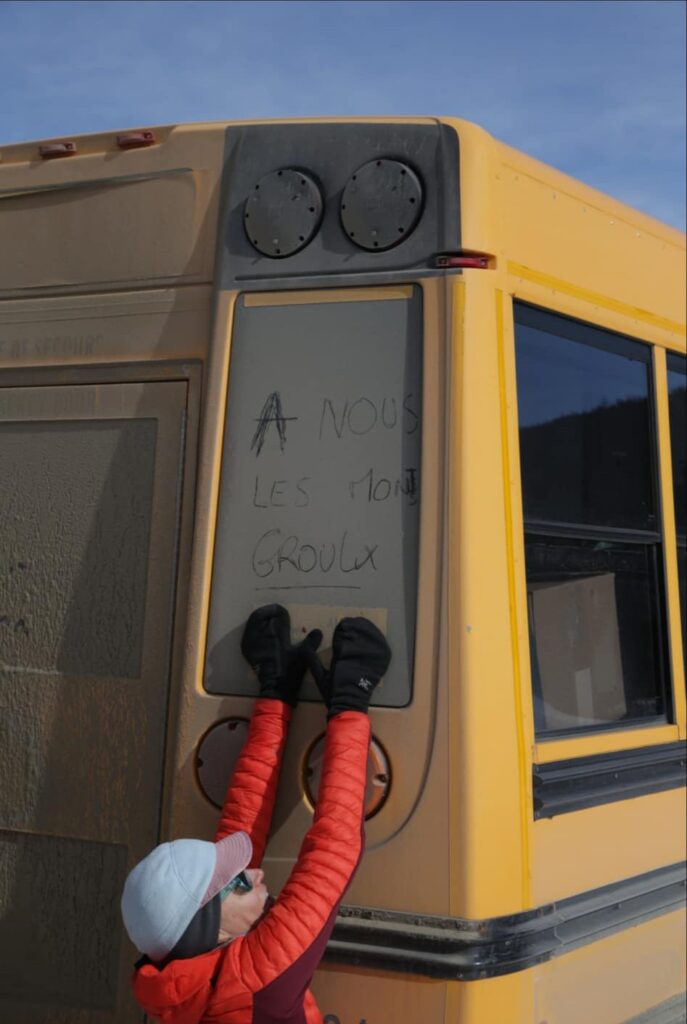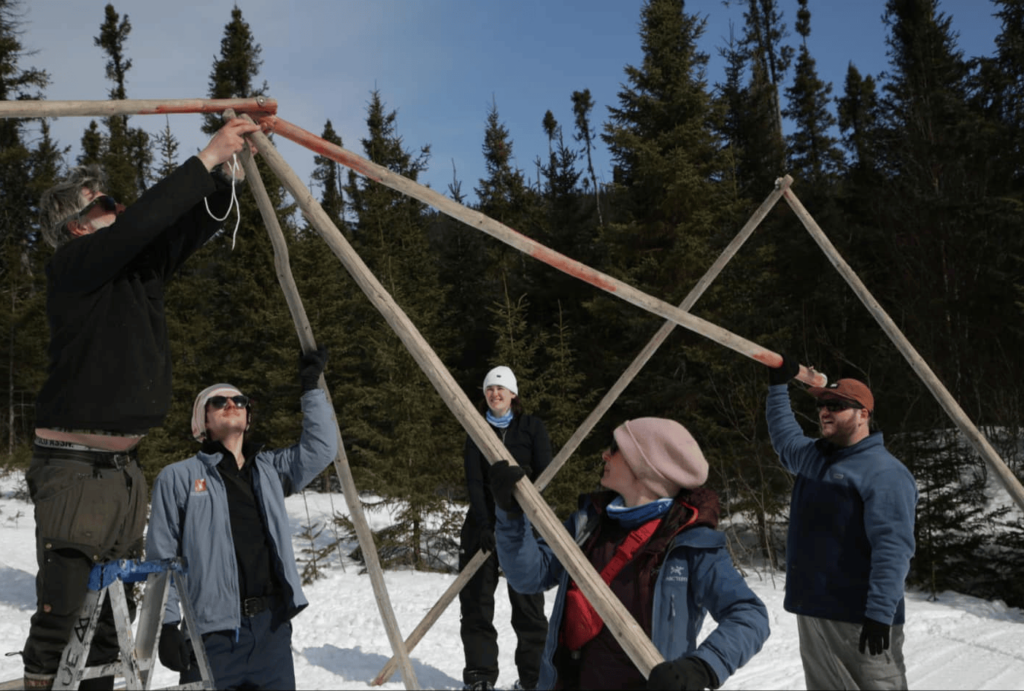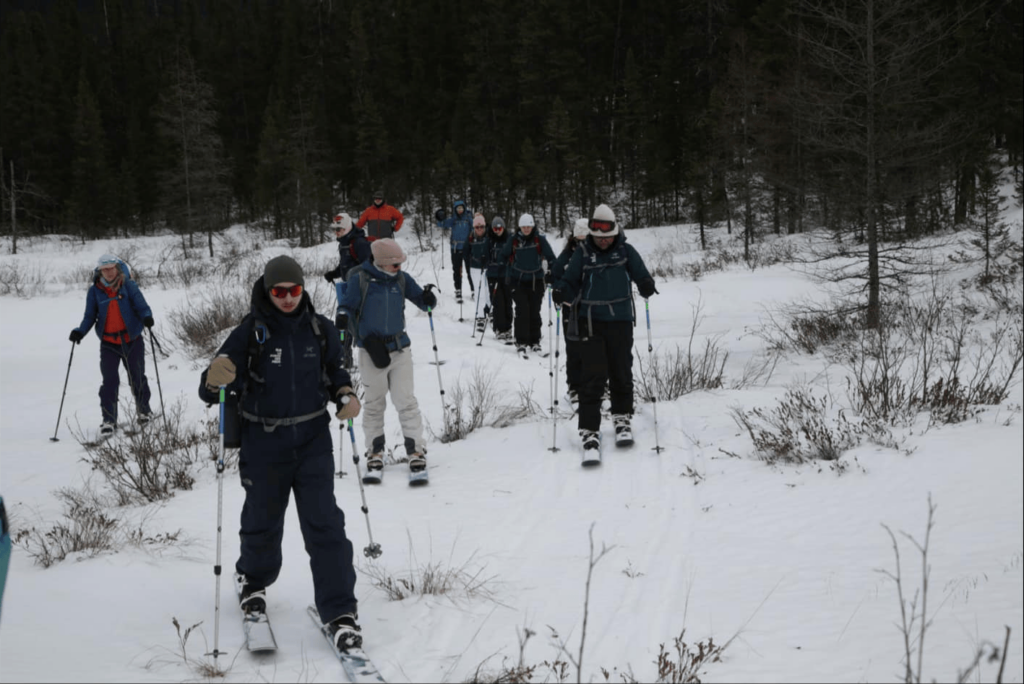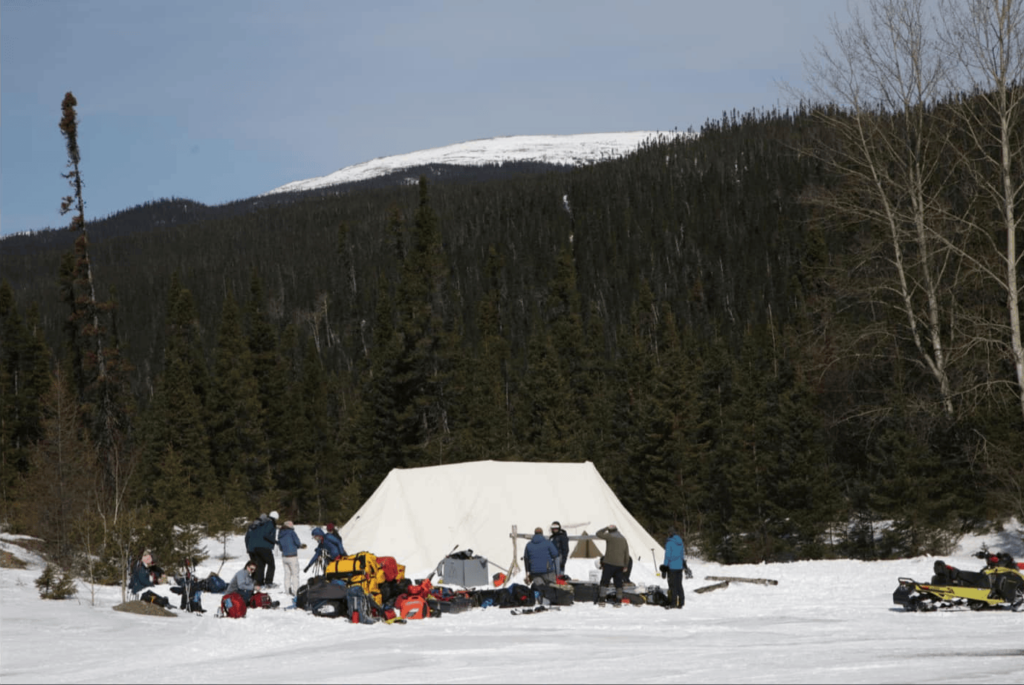
We left civilization behind, loaded our gear, set up our base camp and tried out hok skiing before preparing for our first night’s winter camping.
Sheltered by the mountains
Under the Shaputuan (longhouse), the group sits in a circle and eats by candlelight. There is much laughter and compliments for the chef, Fred, who is cooking in the neighbouring tent (General Tao Chicken, recipe available on request). At either end of the tent, a wood-burning stove warms the atmosphere. Tonight is our first night of winter camping, a prospect that worries some of us. We’ve been preparing for it since the start of the trip. It’s quite a science: how to dress, where to put the toothpaste so that it doesn’t freeze, how to keep warm without getting out of the sleeping bag (Ève-Marie advises lying down). But above all, THE existential question that everyone asks: ‘Do you go out in the cold to pee or wait until morning?’ The answer is at the end of this article.
Outside, Chandra, Vincent and Sarah are doing the dishes under the constellation of Orion. We set up camp late this morning at the foot of the Monts Groulx. We had just left behind the last traces of civilization and the hordes of snowmobilers from Uapishka Station. After a kilometre’s walk, we were finally alone in the silence, surrounded by spruce trees and ptarmigans, sheltered by the mountains. Aurélie found that ‘disconnecting from the world and living in the now’ was surprisingly easy.
Base camp
But before we found peace and quiet, there was a lot to do. First, we had to load all our equipment onto the snowmobiles. I’m talking about a lot of equipment for eighteen people: a Shaputuan, four extra tents, about twenty duffel bags full of clothes and equipment, several dozen pairs of skis and snowshoes, several gas stoves, two wood-burning stoves, a huge first aid kit, several days’ worth of food, a satellite dish and probably a few other things.
Once on site, in the sunshine, a small group starts to build the longhouse under Fred’s guidance. Long, sturdy wooden poles are erected and secured with ropes before being covered with several large tarpaulins. Outside, the other tents are being set up and another group carve out a pile of snow to serve as a service counter. There are even long logs buried in the ground, ideal for benches. This will be our base camp for the next two days.
Getting around by gliding
And during this already busy day, we also found time to try out our new means of transport: hok skis. Shorter and wider than a downhill ski, they can be worn with normal winter boots, like snowshoes, and the heel is never fixed. Half of the surface is covered with sealskin (a non-slip material). To move forward, you glide along, without the inertia of cross-country skiing and without lifting your feet as you would when snowshoeing. Today’s route is less than two kilometres and is an introduction to the equipment and technique. It’s fair to say that everyone did very well, especially considering the difficult snow conditions, which were covered in a hard layer of ice. For Chandra, there was another challenge to overcome: “after my treatment, I lost a lot of technique, and I was a bit scared on the descents.” However, when it was time to head back, she was the first to urge the group to continue. As for Vincent, this was only his second time skiing and, despite several falls, he admitted that he “wanted to find some more slopes to go down before we went back to camp.”
Tonight, everyone will probably sleep very well. And despite the cold, we can still hear the laughter and stories of the constellations.
Answer: Going out in the cold to the toilet is the best solution!
Valérian Mazataud, volunteer photographer and blogger for the On the Tip of the Toes Foundation
Translated by Lorraine Gagnon
